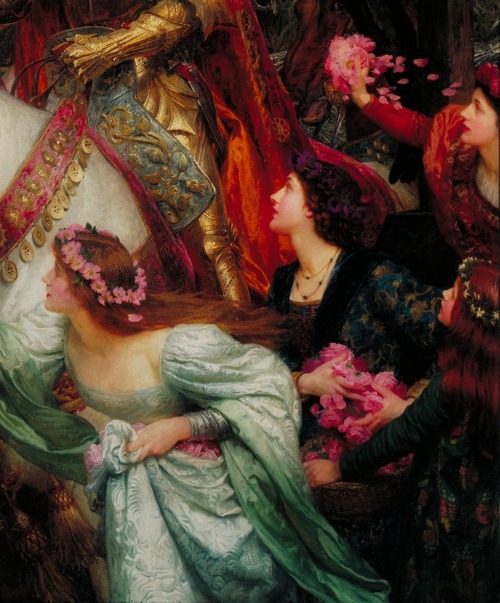#frank dicksee
Frank Dicksee (Francis Bernard Dicksee) (1853–1928, Engand)
Medievalist paintings
Frank Dicksee was a prominent EnglishVictorian painterandillustrator. The son of Thomas Francis Dicksee, a noted painter of Shakespearean characters, he is best known for his pictures of dramatic literary, historical, and legendary scenes. He also was a noted painter of portraits of fashionable women, which helped to bring him success in his own time.
His style was not fully within other popular modes of the time, such as Pre-RaphaelismorNeoclassicism, and can be seen as a fusion of various methods and aesthetics of his time, including later in life utilising post-Romantic techniques such as lighter brushwork and softer shades.
Post link
Frank Dicksee (Francis Bernard Dicksee) (1853–1928, Engand)
Illustrations to ‘Romeo & Juliet’, Sir Cassell & Company Limited, London, 1884
Frank Dicksee was a prominent EnglishVictorian painterandillustrator. The son of Thomas Francis Dicksee, a noted painter of Shakespearean characters, he is best known for his pictures of dramatic literary, historical, and legendary scenes. He also was a noted painter of portraits of fashionable women, which helped to bring him success in his own time.
His style was not fully within other popular modes of the time, such as Pre-RaphaelismorNeoclassicism, and can be seen as a fusion of various methods and aesthetics of his time, including later in life utilising post-Romantic techniques such as lighter brushwork and softer shades.
Post link
Frank Dicksee (Francis Bernard Dicksee) (1853–1928, Engand)
Genre scenes
Frank Dicksee was a prominent EnglishVictorian painterandillustrator. The son of Thomas Francis Dicksee, a noted painter of Shakespearean characters, he is best known for his pictures of dramatic literary, historical, and legendary scenes. He also was a noted painter of portraits of fashionable women, which helped to bring him success in his own time.
His style was not fully within other popular modes of the time, such as Pre-RaphaelismorNeoclassicism, and can be seen as a fusion of various methods and aesthetics of his time, including later in life utilising post-Romantic techniques such as lighter brushwork and softer shades.
Post link

La Belle Dame Sans Merci (Detail)
Frank Dicksee, c. 1901
“La Belle Dame sans Merci”
Frank Dicksee, ca 1901
O what can ail thee, knight-at-arms,
Alone and palely loitering?
The sedge has withered from the lake,
And no birds sing!
O what can ail thee, knight-at-arms,
So haggard and so woe-begone?
The squirrel’s granary is full,
And the harvest’s done.
I see a lily on thy brow,
With anguish moist and fever-dew,
And on thy cheeks a fading rose
Fast withereth too.
I met a lady in the meads,
Full beautiful, a fairy’s child;
Her hair was long, her foot was light,
And her eyes were wild.
I made a garland for her head,
And bracelets too, and fragrant zone;
She looked at me as she did love,
And made sweet moan.
I set her on my pacing steed,
And nothing else saw all day long,
For sidelong would she bend, and sing
A faery’s song.
She found me roots of relish sweet,
And honey wild, and manna-dew,
And sure in language strange she said—
‘I love thee true’.
She took me to her Elfin grot,
And there she wept and sighed full sore,
And there I shut her wild, wild eyes
With kisses four.
And there she lullèd me asleep,
And there I dreamed—Ah! woe betide!—
The latest dream I ever dreamt
On the cold hill side.
I saw pale kings and princes too,
Pale warriors, death-pale were they all;
They cried—‘La Belle Dame sans Merci
Hath thee in thrall!’
I saw their starved lips in the gloam,
With horrid warning gapèd wide,
And I awoke and found me here,
On the cold hill’s side.
And this is why I sojourn here,
Alone and palely loitering,
Though the sedge is withered from the lake,
And no birds sing.
John Keats, 1819
Post link
The Funeral of a Viking[1893]
Artist: Frank Dicksee
A Viking killed in battle is laid out in his boat which has been ceremonially set ablaze and is being pushed out to sea with the tide. Fire and water will combine to release the spirit, allowing the heroic warrior to enter Valhalla, the god Odin’s glorious Hall of the Slain.
Housed:Manchester Art Gallery
Post link




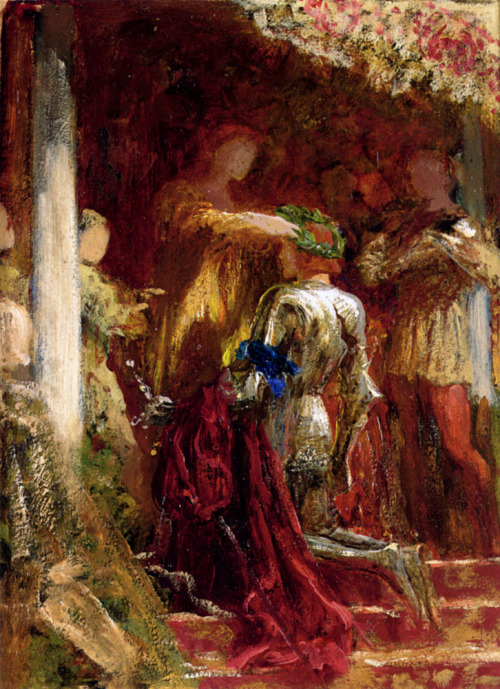
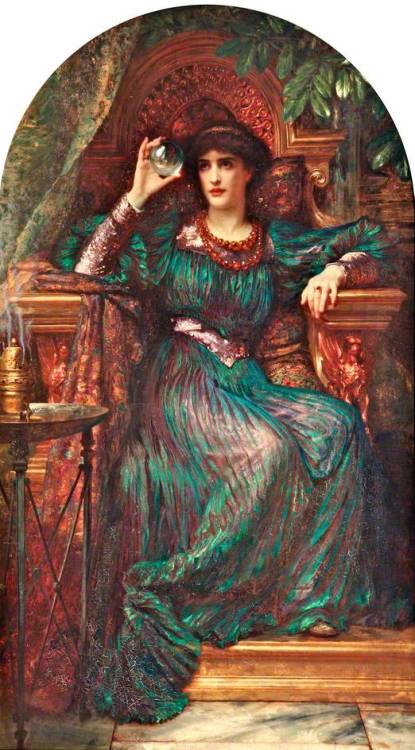
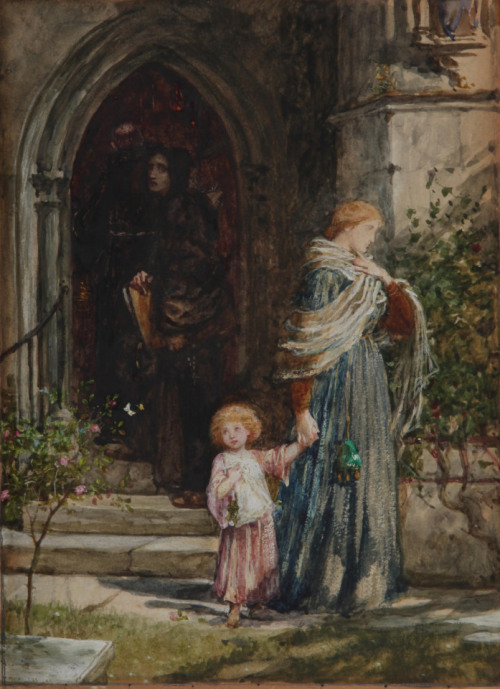
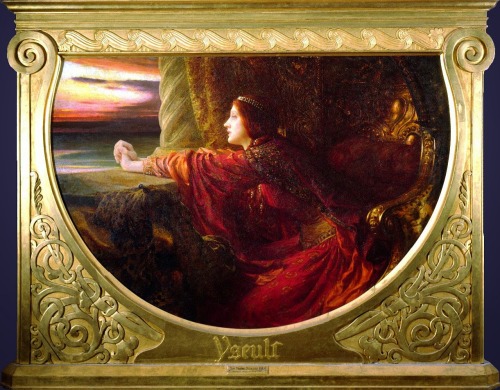

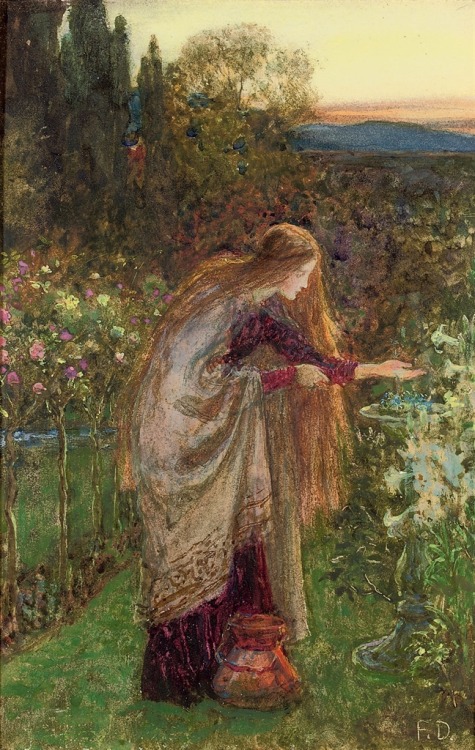
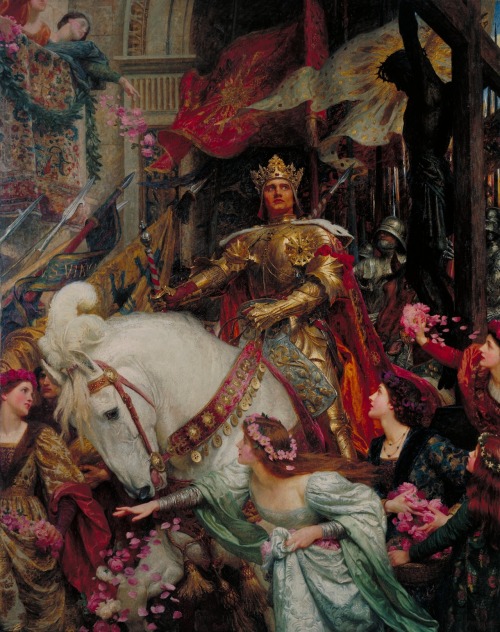

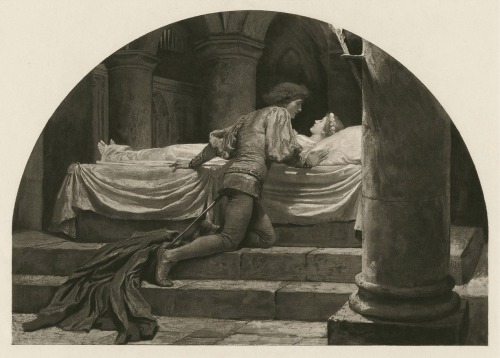
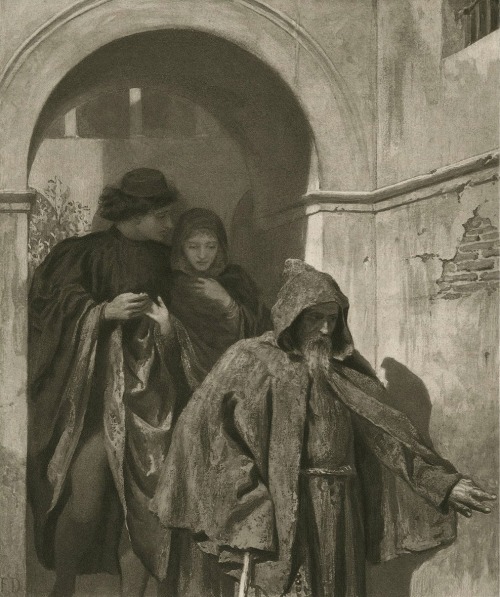



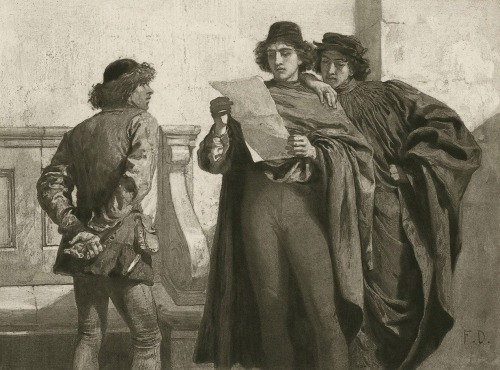
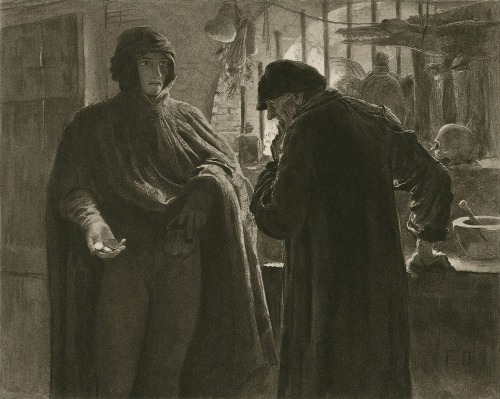
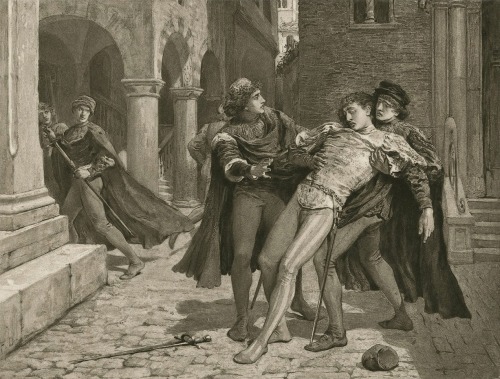




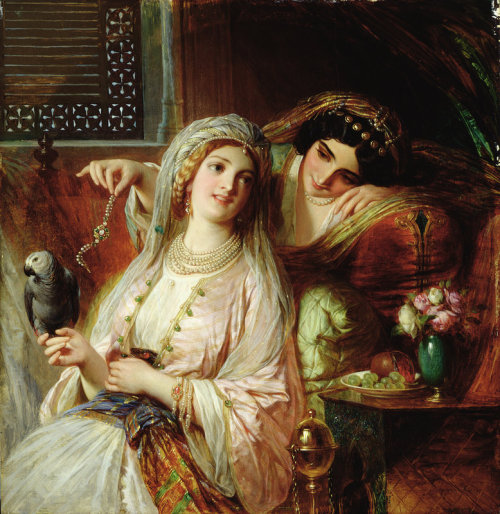

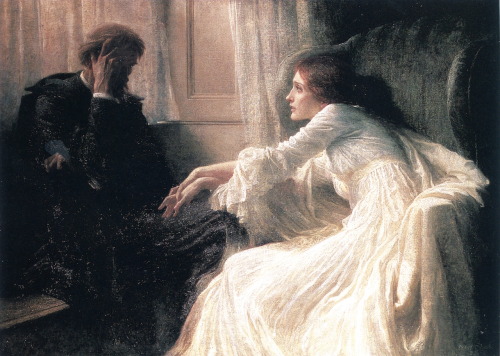



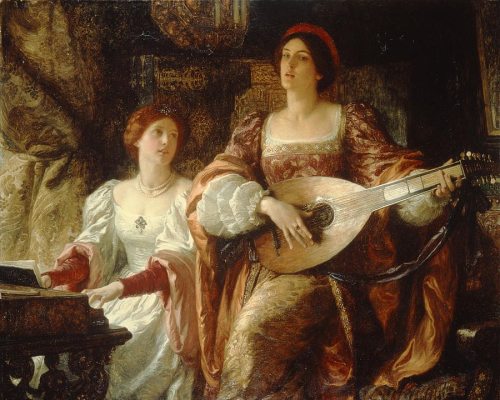
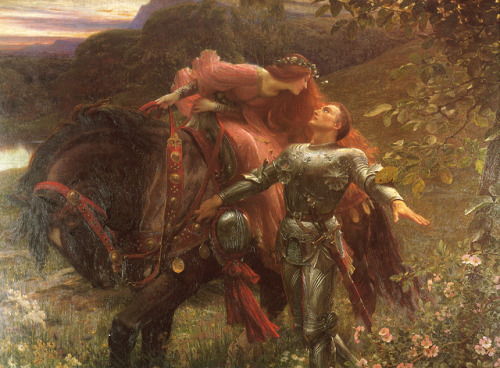
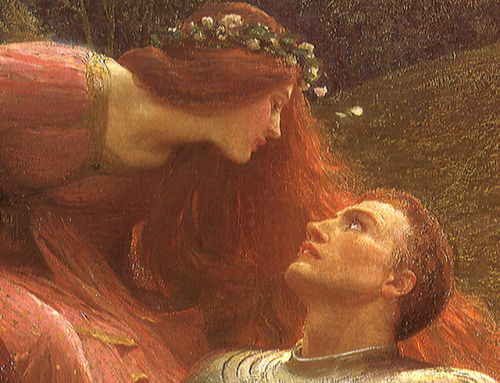
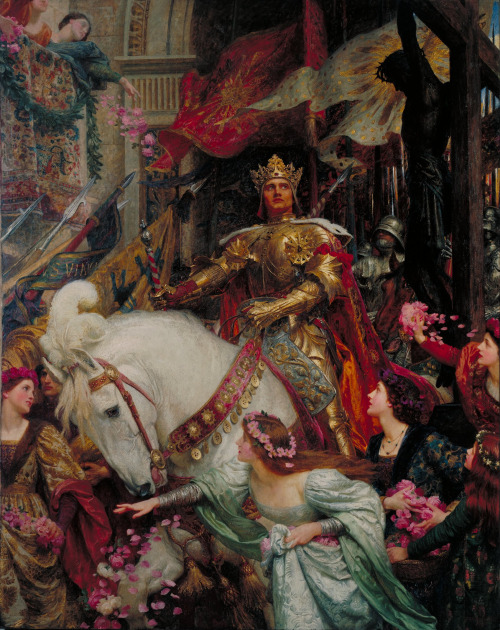

![The Funeral of a Viking [1893]Artist: Frank DickseeA Viking killed in battle is laid out in his boat The Funeral of a Viking [1893]Artist: Frank DickseeA Viking killed in battle is laid out in his boat](https://64.media.tumblr.com/137620a249253b284c66ee58072b706c/601ce338be21c8b4-a4/s500x750/17bcc0d45709547329a853444ed1bb2b56129aac.jpg)
